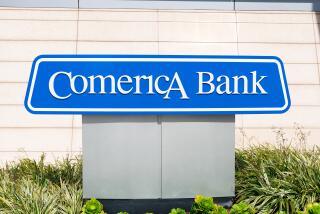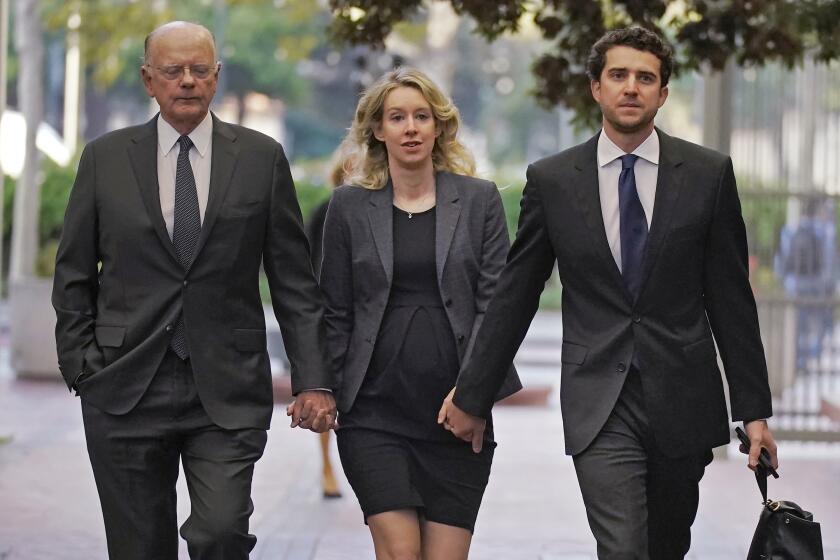Nation’s S&L; Industry Suffers Record $6.8-Billion Loss in ’87
- Share via
The nation’s savings and loans suffered their worst losses in history in 1987, a total of $6.8 billion, including $3.2 billion in the fourth quarter, federal thrift regulators disclosed Thursday.
The losses are dramatic statistical evidence of how the problems of a relative few companies have overwhelmed the rest of the industry. According to figures supplied by the Federal Home Loan Bank Board, 20 of the nation’s sickest thrifts lost nearly $5 billion last year, including $2.1 billion in the final three months of the year.
For the record:
12:00 a.m. March 26, 1988 FOR THE RECORD
Los Angeles Times Saturday March 26, 1988 Home Edition Business Part 4 Page 2 Column 6 Financial Desk 1 inches; 21 words Type of Material: Correction
A chart in most Friday editions incorrectly stated the profit position of California savings and loan associations. The corrected chart is below.
GRAPHIC-CHART: STATE S & L EARNINGS
Although most savings and loans make money, the industrywide losses have undermined public confidence in these financial institutions and have depressed the stock prices of the publicly traded ones. “Clearly, the many are being pulled down by the few,” James Barth, chief economist of the bank board, told reporters at a news conference in Washington.
There are about 3,150 thrifts in the United States, the biggest of which are in California. Several hundred are insolvent, meaning that their liabilities exceed their assets.
Nearing the Limit
The industry’s worsening financial condition should add fuel to a growing debate over whether the American taxpayer will ultimately have to bail out the Federal Savings and Loan Insurance Corp. FSLIC, funded by industry premiums, insures deposits up to $100,000 per account and pays the bill when a thrift fails.
FSLIC received an industry-funded, $10.8-billion bailout last year to handle an increasingly expensive rash of failures. But there is growing talk that the healthy part of the industry will balk if asked to ante up additional money.
“They’re saying that Ford and General Motors didn’t bail out Chrysler,” said Dennis Jacobe, research director for the U.S. League of Savings Institutions, a trade group. “They feel they have already put up more than their share.”
Peter Treadway, financial analyst for the investment firm of Smith Barney, Harris Upham, said: “The great fear is the bank board will march down Wilshire Boulevard and steal the net worth of the healthy thrifts to pay for the bad guys.”
Most of the insolvent thrifts in this country are in the Southwest, particularly in Texas, but included on the bank board’s 20-sickest list is Financial Corp. of America in Irvine, according to economist Barth. FCA, which owns American Savings & Loan, lost $468 million in 1987.
The $6.8-billion loss for all U.S. thrifts easily surpasses the industry’s previous record loss of $4.6 billion set in 1981. Savings and loans also lost more than $4 billion in 1982, after soaring interest rates sharply increased their deposit costs.
The seeds for 1987 were sown in 1983, 1984 and 1985, when savings and loans, unshackled by deregulation, invested billions of dollars in office buildings, shopping centers, condominiums and other real estate development projects. Many of those projects later soured, resulting in massive losses for lenders and investors.
State Ranks Second
Oil-dependent states such as Texas have been hit hardest because slumping petroleum prices have continued to depress real estate values. Thrifts in Texas and surrounding states lost $2.5 billion from October through December, Barth said in a telephone interview.
California is the nation’s second-leading trouble spot, Barth said, though it is a “distant second.” California’s thrifts lost $212 million in the fourth quarter, mostly because of FCA’s heavy losses.
Analysts say the losses will continue in 1988 but probably not at their present rate. “It’s a staggering loss,” analyst Treadway said, referring to the industry’s 1987 record, “but it probably won’t be as bad this year as it was last year.”
“I would think” the worst is over, added Jerome I. Baron, analyst for Prudential-Bache Securities.
On another front, in response to questions raised in a Washington Post story, the Federal Home Loan Mortgage Corp. reaffirmed the propriety and legality of its short-term loans to American Savings. These loans, which totaled $3.37 billion at the end of 1987, are known as reverse repurchase agreements and are secured by mortgage-backed securities.
“They represent a profitable line of business” that is “consistent with our charter authority,” the quasi-governmental agency, known as Freddie Mac, said in a brief statement.
Part of the Federal Home Loan Bank Board system, Freddie Mac’s principal job is to provide liquidity to the nation’s home loan market by buying mortgages from lenders and packaging them for sale to investors as mortgage-backed securities.
More to Read
Inside the business of entertainment
The Wide Shot brings you news, analysis and insights on everything from streaming wars to production — and what it all means for the future.
You may occasionally receive promotional content from the Los Angeles Times.










